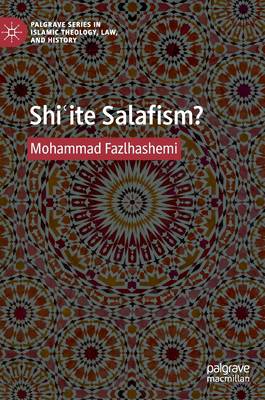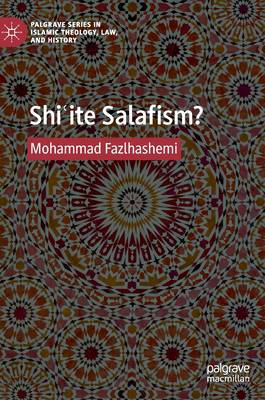
- Afhalen na 1 uur in een winkel met voorraad
- Gratis thuislevering in België vanaf € 30
- Ruim aanbod met 7 miljoen producten
- Afhalen na 1 uur in een winkel met voorraad
- Gratis thuislevering in België vanaf € 30
- Ruim aanbod met 7 miljoen producten
Zoeken
Omschrijving
This book is about the emergence of a stream of ideas in the 1930s and 1940s within Imamiyya Shiʿite context, focusing primarily on the thought of Shariʿat Sangelaji (1891-1944), who harshly criticized a number of basic theological beliefs within Imamiyya Shiʿa. Accusing them of polytheism and superstition on account of their ideas about shifaʿa intercession, and their pilgrimage to the graves of the Shiʿite imams, he also criticized the belief that the twelfth imam al-Mahdi has been living in covertness since the 9th century, and that a number of historical figures will be resurrected upon his return to assist him in the final battle against the evil.
Taking at once a theological and historical approach, Mohammad Fazlhashemi investigates whether Salafist mainstreaming thoughts, despite its hostile attitude towards Shiʿa Islam, had any influence over Shiʿite theology. He explores whether and what components of the Salafist traditionof ideas have been adopted by theologians within Imamiyya shiʿa or whether in fact whether these changes were the result of an internal theological tug-of-war within the Imamiyya Shiʿa that was influenced by the interwar modernization efforts. Fazlhashemi examines the characteristic features of this flow of ideas, its sources of inspiration, the reception of its thought, and the imprints it made on theological currents within Imamiyya shiʿa in Iran during its time and time thereafter.
Taking at once a theological and historical approach, Mohammad Fazlhashemi investigates whether Salafist mainstreaming thoughts, despite its hostile attitude towards Shiʿa Islam, had any influence over Shiʿite theology. He explores whether and what components of the Salafist traditionof ideas have been adopted by theologians within Imamiyya shiʿa or whether in fact whether these changes were the result of an internal theological tug-of-war within the Imamiyya Shiʿa that was influenced by the interwar modernization efforts. Fazlhashemi examines the characteristic features of this flow of ideas, its sources of inspiration, the reception of its thought, and the imprints it made on theological currents within Imamiyya shiʿa in Iran during its time and time thereafter.
Specificaties
Betrokkenen
- Auteur(s):
- Uitgeverij:
Inhoud
- Aantal bladzijden:
- 183
- Taal:
- Engels
- Reeks:
Eigenschappen
- Productcode (EAN):
- 9783031187384
- Verschijningsdatum:
- 18/11/2022
- Uitvoering:
- Hardcover
- Formaat:
- Genaaid
- Afmetingen:
- 148 mm x 210 mm
- Gewicht:
- 381 g

Alleen bij Standaard Boekhandel
+ 299 punten op je klantenkaart van Standaard Boekhandel
Beoordelingen
We publiceren alleen reviews die voldoen aan de voorwaarden voor reviews. Bekijk onze voorwaarden voor reviews.








